Though it is often said that our eyes are the window to our soul, when it comes to plants, their leaves can be the window to their health. Problems such as nutrient deficiency, overwatering, high levels of salts and too much sun are indicated by changes in the leaves. Let’s look at some of the most common “leafy” symptoms, problems they point to and ways to correct them.
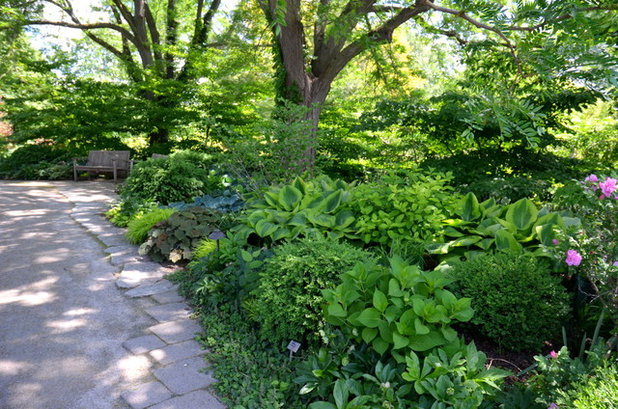
Noelle Johnson Landscape Consulting
Most of us can easily tell a healthy plant from their bright green uniform color (with the exception of variegated leaves), with no symptoms of unusual yellowing or brown areas. These leafy plants at Olbrich Botanical Gardens, in Madison, Wisconsin, are vibrant and healthy.
But what if the leaves of a plant are less than perfect? Maybe they are showing symptoms of yellowing, dead or brown areas. Let’s take a look at some common plant problems that can often be identified by looking at the leaves.
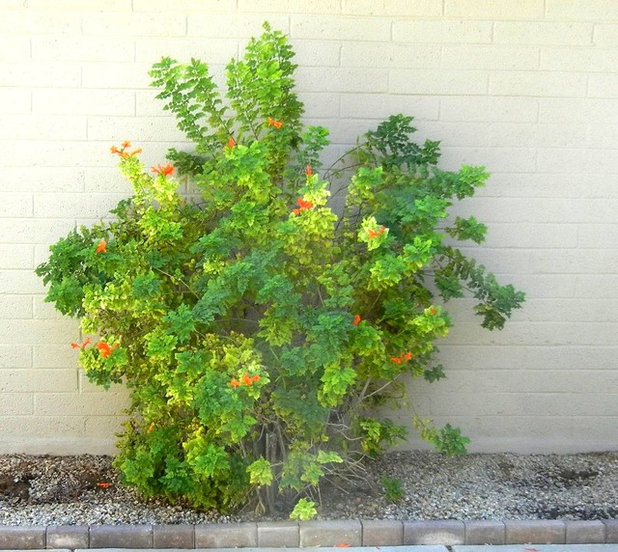
Noelle Johnson Landscape Consulting
Shown: A cape honeysuckle shrub showing signs of iron chlorosis
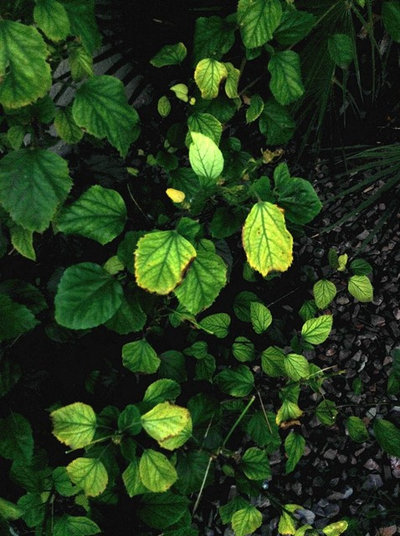
Noelle Johnson Landscape Consulting
Iron DeficiencyHow to spot it. Also known as iron chlorosis, iron deficiency is easily identified by light green-yellow leaves with darker green veins. Iron is needed for the production of chlorophyll, and without enough iron, the leaves begin to yellow. Iron chlorosis initially shows up in new growth and later travels to older leaves.
What causes it. Iron chlorosis is a fairly common ailment of plants that grow in alkaline soils, shady areas and overly wet soil. The cool soil temperatures in winter can also cause iron chlorosis. In most cases of iron chlorosis, there is plenty of iron in the soil but for a variety of reasons it is unavailable to plants. The high pH of alkaline soils and cool winter soil temperatures can prevent iron from being absorbed by plants. Low levels of oxygen in the soil can also lead to iron deficiency. This is often seen in overly wet and ompacted soils.
Shown: Chlorotic leaves on a hibiscus shrub
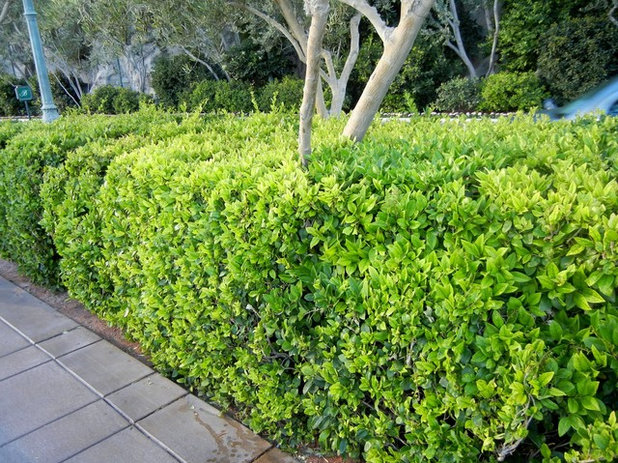
Noelle Johnson Landscape Consulting
How to treat it. Adding supplemental iron is the first reaction when treating iron deficiency in your plants, but it’s often a short-term solution that has to be reapplied and doesn’t fix the cause of iron deficiency. A much better option is to treat the cause of the iron deficiency.
How to prevent it. If you have alkaline soil, consider switching to native plants that are adapted to the higher pH of the soil and do fine with the lower levels of iron available to them. You can help lower the pH of alkaline soil by incorporating organic matter, such as compost, into the soil.
The best way to deal with compacted soil is to prevent it. Apply an organic mulch such as shredded bark or wood chips around plants, which will help prevent soil compaction. In addition, as they decompose, they help to lower the soil pH.
Adjust the irrigation in areas with wet soils or create elevated planting areas to keep water from collecting. You can also use plants adapted to wet soils.
Shown: A hedge with iron deficiency
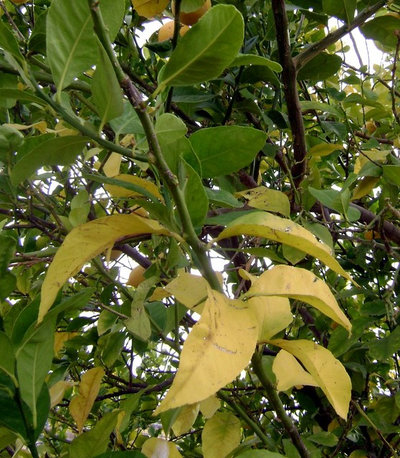
Noelle Johnson Landscape Consulting
Nitrogen DeficiencyHow to spot it. Nitrogen is the most important nutrient for plants and is responsible for all aspects of their growth, development and reproduction. When levels of nitrogen are low, all of a plant’s processes are adversely affected.
The most obvious symptom of nitrogen deficiency are yellow leaves, which generally show up first on older leaves and then gradually spread throughout the entire plant. Often the symptoms of iron and nitrogen deficiency are confused with each other, but it helps to remember that when nitrogen is deficient the entire leaf turns yellow, including the veins, and older leaves are affected first. Conversely, iron deficiency shows up on newer leaves first and the veins are darker green than the surrounding leaf.
Shown: Citrus leaves showing symptoms of nitrogen deficiency
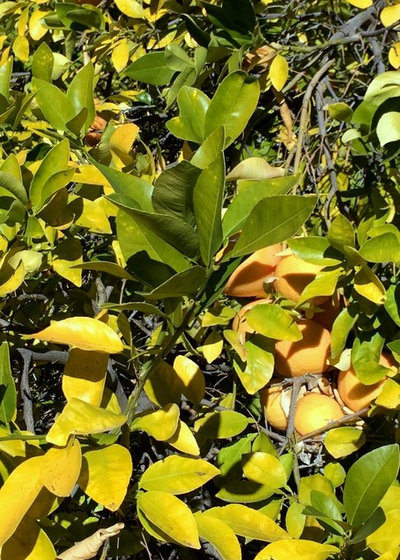
Noelle Johnson Landscape Consulting
What causes it. Nitrogen levels in the soil can drop after heavy rains or excessive irrigation, when it is easily leached away. Plants may also show symptoms of nitrogen deficiency if they are planted in nutrient-poor soils with perpetually low levels of nitrogen.
How to treat it. When faced with symptoms of nitrogen deficiency, adding nitrogen-containing inorganic fertilizer is the most common first reaction. While this does fix that problem rather quickly, its effect doesn’t last long.
Add nitrogen to the soil through organic methods for the best long-term solution to nitrogen deficiency. This improves the soil texture and water-holding capacity and lasts a long time. Amendments incorporated into the soil such as compost and aged manure release low amounts of nitrogen over a long length of time. Blood meal is also a great organic source of nitrogen.
How to prevent it. Perhaps the simplest solution If you have nutrient-poor soils is to cooperate with nature and use plants that are native and have adapted to surviving in nutrient-poor soils. If you aren’t sure what nutrient(s) your soil is deficient in, you can have your soil tested through your local cooperative extension office.
Shown: Leaves with nitrogen deficiency
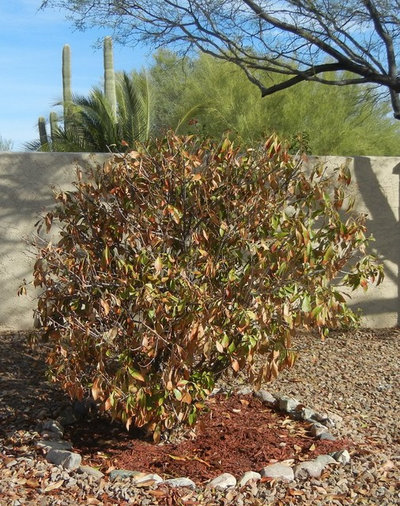
Noelle Johnson Landscape Consulting
Salt DamageHow to spot it. We all know that too much salt isn’t healthy for humans. Not surprisingly, it’s also bad for plants. High levels of salt affect plants adversely in several ways. Salt creates browning of the leaf as it’s absorbed, beginning at the tips and margins of the leaf and eventually spreading to the entire leaf. Plant roots are also affected by high levels of salts in the soil, which can dehydrate them while also making many nutrients, such as potassium and magnesium, unavailable.
Shown: Shrub showing severe salt damage
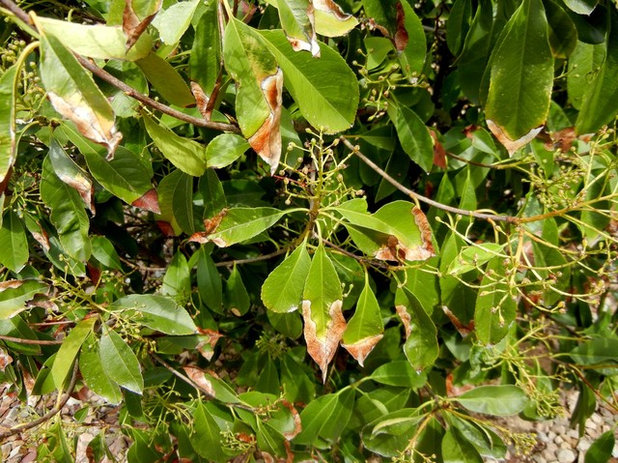
Noelle Johnson Landscape Consulting
What causes it. Water easily leaches salt from soil, so it’s not surprising that arid and semi-arid areas have higher levels of salt in the soils due to the lack of rain. Areas of the country where de-icing salts are routinely used in winter also have problems with high levels of salt.
How to treat it. Flushing out salts from the root zone is one way to keep salt damage at bay. This entails watering deeply, to a depth of 1 to 2 feet, which leaches the salt away from the root zone.
How to prevent it. Mixing in sand or cat litter with de-icing salts can decrease the amount of salt needed. Perhaps the easiest way to deal with this problem is to use plants that are adapted to higher levels of salt in the soil. Browse Mountain States Wholesale Nursery’s list of salt-tolerant plants for the Southwest and Virginia Cooperative Extension’s publication on trees and shrubs that tolerate saline soils.
Shown: Browning of leaf tips, a symptom of salt damage
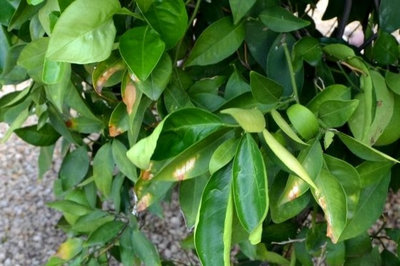
Noelle Johnson Landscape Consulting
Sunburn How to spot it. This type of leaf damage occurs from intense sunlight and often dry conditions. The leaf tissue actually burn, resulting in yellow, white or light brown areas on the edges and interior of the leaf.
What causes it. Sunburned leaves occur most often on the plant’s outer growth on the south-facing side, where the sun’s rays are the most intense.
How to treat it. Prevention is the best thing, but refrain from removing sunburned leaves until the end of summer since they provide protection for the leaves underneath.
How to prevent it. To prevent sunburn damage to the leaves, it’s important to keep them healthy by fulfilling their watering and fertilizer needs. In addition, keep excessive pruning in summer to a minimum since new growth is more susceptible to sunburn.
Place sun-sensitive plants in areas with filtered or full shade to protect them from the sun’s rays. Or add shade cloth for protection. An arbor or decorative screen can also help protect from sunburn.
The easiest solution is to utilize drought-tolerant plants that are adapted to growing in full sun.
Shown: Sunburned citrus leaves
Region by Region: What to Do in Your Garden This Month
Browse native plant growing guides





